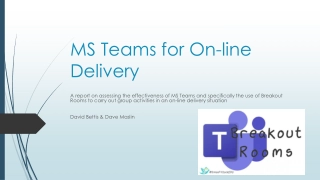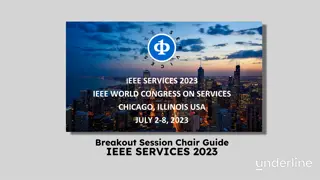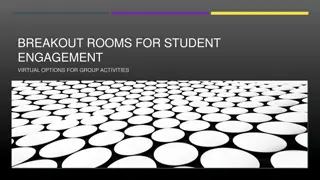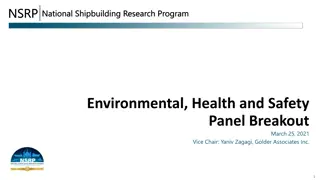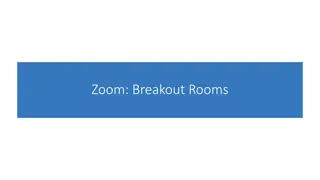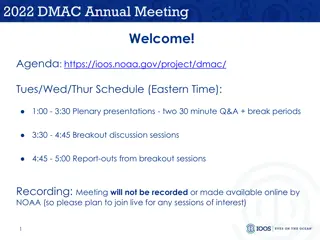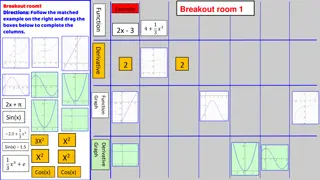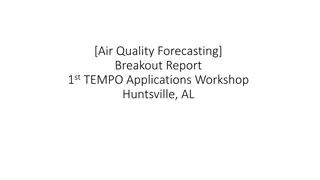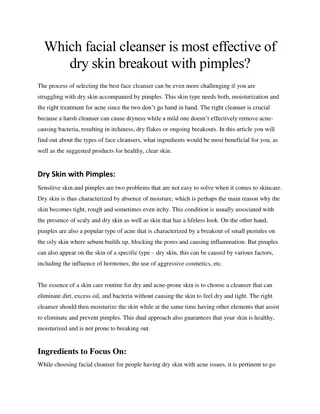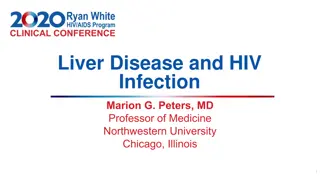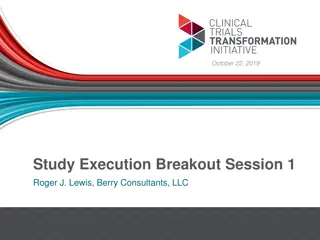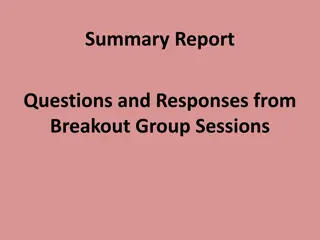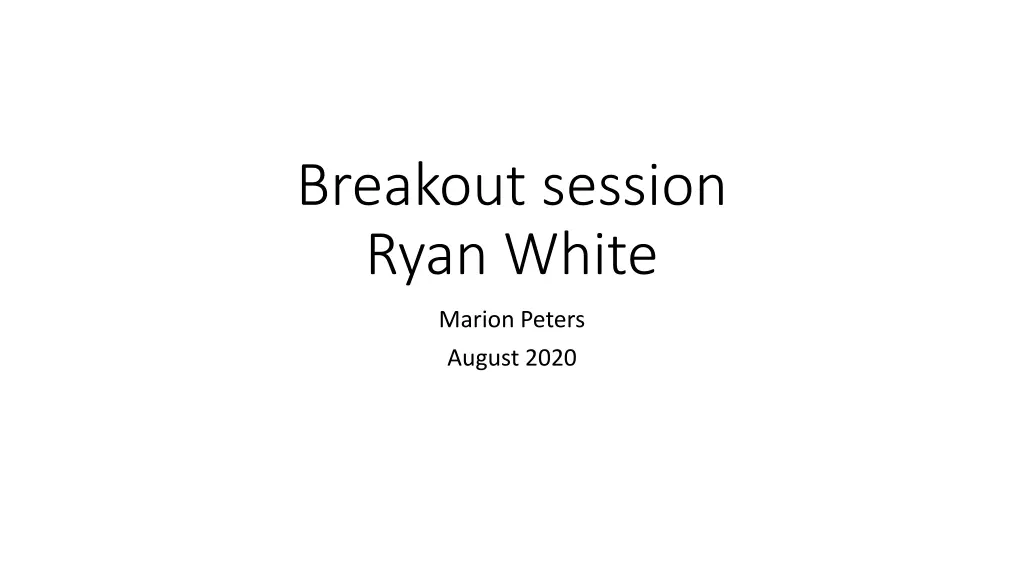
Evaluation and Management of Liver Abnormalities in Patients Living with HIV and HCV
Learn about the evaluation and management of liver abnormalities in individuals with HIV and HCV co-infection. Explore cases, key labs, imaging options, and fibrosis assessment techniques to provide comprehensive care for patients with these conditions.
Download Presentation

Please find below an Image/Link to download the presentation.
The content on the website is provided AS IS for your information and personal use only. It may not be sold, licensed, or shared on other websites without obtaining consent from the author. If you encounter any issues during the download, it is possible that the publisher has removed the file from their server.
You are allowed to download the files provided on this website for personal or commercial use, subject to the condition that they are used lawfully. All files are the property of their respective owners.
The content on the website is provided AS IS for your information and personal use only. It may not be sold, licensed, or shared on other websites without obtaining consent from the author.
E N D
Presentation Transcript
Breakout session Ryan White Marion Peters August 2020
ARS Question 1: Which statement is true about HCV/HIV 1. Treatment of HIV/ HCV coinfection differs from HCV monoinfection 2. HCV Ab protects against reinfection with HCV 3. Spontaneous clearance is common after acute HCV infection in PLWH 4. HCC occurs after cure of HCV
Case 1 Case 1 63 AA male with HTN, hyperlipidemia and HIV referred for abnormal LFTs Exam and key labs: AST 63 ALT 52 Cr 0.8 PLT 78 ALB 3.4 INR 1.1 Tbili 0.9 Meds: omeprazole 20 mg QD, HCTZ, rosuvastatin 5mg Dolutegravir, TAF and 3TC
Evaluation of Abnormal LFTs in PLWH Evaluation of Abnormal LFTs in PLWH Liver Tests: -Function: Albumin, bilirubin, INR -Cholestasis: Alk Phos, bilirubin Common liver diseases: HBV: HBsAg, anti-HBs, anti-HBc HCV: HCV Ab, HCV RNA NAFLD: Fasting glucose, TG, cholesterol, Hgb A1c Less common Metabolic: Iron, Tsat, ferritin (hemochromatosis), Ceruloplasmin (Wilson Disease) Autoimmune diseases: AMA, IgM (for PBC), ASMA, ANA, IgG (for AIH) A1AT phenotype Hepatotoxicity -Inflammation: AST, ALT -portal HTN: platelets, WBC -alcohol -drug toxicity Fibrosis: APRI: AST/Platelet ratio; FIB-4 (AST, ALT, plt, age); Fibroscan, ARFI (ultrasound) Liver biopsy Imaging only if PHTN Vaccination status for HAV (IgG) and HBV Liver imaging and fibrosis assessment
Fibrosis Assessment Fibrosis Assessment APRI: AST/Platelet ratio; 2.02= cirrhosis FIB-4 (AST, ALT, plt, age); 7.06 = cirrhosis Fibroscan, ARFI (ultrasound) Liver biopsy not needed Imaging only useful to diagnose fibrosis severity if PHTN Ultrasound: nodular liver with splenomegaly HCV RNA 5 million
Case 1 Case 1 63 AA male HTN, hyperlipidemia HIV and HCV GT1a Cirrhosis based on FIB-4 and nodular liver on imaging with splenomegaly HCV RNA 5 million Exam and key labs: Abd: No ascites. No asterixis PLT 78 ALB 3.4 INR 1.1 Tbili 0.9 AST 63 ALT 52 Cr 0.8 (CTP A6) Meds: omeprazole 20 mg QD, HCTZ, rosuvastatin 5mg Dolutegravir, TAF and 3TC
Treatment Treatment- -Naive Genotype 1a with HIV and Naive Genotype 1a with HIV and Compensated Recommended regimens listed by evidence level and alphabetically Compensated Cirrhosis Cirrhosis Daily fixed-dose combination of elbasvir (50 mg)/grazoprevir (100 mg) for patients without baseline NS5A RASsbfor elbasvir 12 weeks I, A Daily fixed-dose combination of ledipasvir (90 mg)/sofosbuvir (400 mg) 12 weeks I, A Daily fixed-dose combination of sofosbuvir (400 mg)/velpatasvir (100 mg) 12 weeks I, A 8 (12) weeks (HIV) Daily fixed-dose combination of glecaprevir (300 mg)/pibrentasvir (120 mg)c I, B bIncludes genotype 1a RASs at amino acid position 28, 30, 31, or 93 known to confer antiviral resistance. If 1 or more RASs are present, another recommended regimen should be used. cDosing is 3 coformulated tablets (glecaprevir [100 mg]/pibrentasvir [40 mg]) taken once daily.
Recommended treatment HCV simplified Recommended treatment HCV simplified without cirrhosis without cirrhosis- - not for HIV HCV coinfected not for HIV HCV coinfected Genotype 1-6: Glecaprevir (300 mg) / pibrentasvir (120 mg) to be taken with food for a duration of 8 weeks Genotype 1, 2, 4, 5, or 6 Sofosbuvir (400 mg) / velpatasvir (100 mg) for a duration of 12 weeks NOTE: Patients with genotype 3 require baseline NS5A resistance- associated substitution (RAS) testing. Those without Y93H can be treated with 12 weeks of sofosbuvir/velpatasvir. If Y93H is present, see HCV guidance for treatment recommendations.
Drug drug interactions Drug drug interactions Omeprazole with SOF/LED (take together on empty stomach) Omeprazole with SOF/VEL (take DAA with food then PPI 4 hours later) Rosuvastatin- do not use with SOF/LED or SOF/VEL/VOX You don t need to remember, you only need to CHECK HCVguidelines.org University of Liverpool: https://www.hep-druginteractions.org/checker
How to follow up How to follow up No liver follow up Follow up for concommitant disease Follow up for cirrhosis
Case 1 HCV Cured but still a liver problem Case 1 HCV Cured but still a liver problem Cirrhotic so needs q6 monthly AFP and imaging Fibroscan 29kPA and CAP 380 So cirrhotic with portal HTN and steatosis Obesity, HTN, HLD, steatosis Hgb A1c 6.5% fasting glucose 125- borderline diabetes Control weight (diet and exercise), diabetes, cholesterol Healthy life style, limit alcohol, THC not daily
ARS Question 2: Which statement is true in NAFLD and PLWH 1. Fatty liver disease is uncommon in PLWH 2. Liver Fibrosis is uncommon in PLWH with NAFLD 3. Fibroscan can measure fat and fibrosis 4. ART does not lead to weight gain
Elastography: Fibroscan 2.5 kPa Affected by weight, access of probe (2 cm), steatosis
VCTE: Probe Selection Guidance VCTE: Probe Selection Guidance Skin To Capsule Distance 31 mm XL Probe Selection Tool XL Amplitude TimeMotion
Problems with VCTE (Fibroscan) False positive Acute inflammation (ALT>100) Rejection Cholestasis Hepatic congestion Non fasting state Alcohol Hard to estimate Too fat Too thin Vessels False negative HCV after cure Requires adequate experience to produce reliable results At least 50 scans reviewed by expert Vuppalanchi, Hepatology, 2017
What Does CAP Measure? What Does CAP Measure? Controlled attenuation parameter Ultrasound Attenuation Rate (signal reduction rate) Unit: dB/M (decibels per meter)
ARS Question 3 Which statement is true IN PLWH/HBV 1. HBeAg positivity is lower in PLWH 2. After acute HBV, loss of HBsAg is more common in PLWH than HIV neg 3. Current HBV therapies usually lead to loss of HBsAg 4. ART initiation leads to loss of HBsAg in PLWH
Case 2 Case 2 24 yo MSM HIV diagnosed 1990 HBsAg positive 1997 (HBV DNA 9.62 log c/mL) ART with LAM became anti-HBc positive alone 2004 diffuse large B cell lymphoma treated with steroids and CHOP Issues to consider Journal of Clinical Virology 39 (2007) 48 50
HAART: lamivudine, HAART: lamivudine, efavirenz efavirenz, , lopinavir lopinavir/ritonavir /ritonavir S Steroid CHOP adefovir NHL NHL Dg 1100 9.0 recurrence 1000 8.0 Serum HBV-DNA (log10 copies/mL) HBV DNA Alanine aminotransferase (IL/mL) 900 7.0 800 6.0 700 5.0 600 500 4.0 LOD 400 3.0 300 2.0 200 1.0 ALT 100 0 0.0 June January HBcAb HBsAg HBeAg HBsAb HBeAb HIV load (log10 copies/mL) CD4+ (/mm3) + - - - - + - - - - + + + - - + + + - - + + + - - <1.69 <1.69 <1.69 307 270 390 Journal of Clinical Virology 39 (2007) 48 50
Lymphoma in HIV HBV patient Lymphoma in HIV HBV patient 24 yo MSM HIV diagnosed 1990 HBsAg positive 1997 (HBV DNA 9.62 log c/mL) ART with LAM became anti-HBc positive alone 2004 diffuse large B cell lymphoma treated with steroids and CHOP 6 weeks later he reverse seroconverted to HBsAg positive Delay in chemotherapy Adefovir added with dramatic decline in HBV DNA load and a normalisation of hepatic enzyme levels. Journal of Clinical Virology 39 (2007) 48 50
Reactivation of HBV in HIV Reactivation of HBV in HIV High rate of reactivation in immunosuppressed patients Chemotherapy HIV after immune reconstitution Post organ transplant Biologic response modifiers: rituximab (anti-CD20), TNF- inhibitors Lymphoma increased in HIV patients Even in those who have lost HBsAg and are positive for anti-HBc +/- anti-HBs
Viral Life Cycle Viral Life Cycle HBsAg pos Entry Budding ER Minus strand synthesis Reverse transcriptase P protein pre-genomic RNA Plus strand synthesis Recycling Repair cccDNA S, C, P,e synthesis Nucleus Transcription Host RNA pol RNA packaging (encapsidation) Translation
Viral Life Cycle Viral Life Cycle- - latent or recovered HBV latent or recovered HBV Immune system considers this recovered BUT cccDNA is template for viral replication HBsAg neg Anti-HBs Anti-HBc ER cccDNA Nucleus
Strategies to Eradicate HBV Host immune approaches Virologic approaches Entry inhibitors Block cccDNA Transcription inhibitors RNA interference HBV capsid inhibitor Polymerase inhibitors Secretion inhibitors Interferons RIG-I agonists- d/c hepatotoxicity TLR 7/8 PD-1/ PDL-1 IL-7 Therapeutic vaccines Immune complex vaccines Nasal HBV (NASVAC) vaccines DNA vaccines T cell vaccines Adenovirus based vaccines (TG1050) Yeast based vaccines
NAP HBsAg subviral particles Mature HBV virion HBeAg (P14-17) spherical NAP MYR ASSEMBLY AND SECRETION HBsAg proteins: Precore Protein (p25) LHBsAg MHBsAg NUCLEAR TRANSPORT SHBsAg Precore mRNA TRANSCRIPTION Mature Nucleocapsid Pre-S1 mRNA Pre-S2/S mRNA RT Core + pg RNA + Polymerase RC-DNA Pregenomic RNA DNA Repair Immature Nucleocapsid HBx mRNA HBx ENCAPSIDATION cccDNA Smc 5/6 Intracellular Conversion Pathway Preclin siRNAs Ph1-2 CpCAM Peters and Locarnini Gastro and Hep 2017

